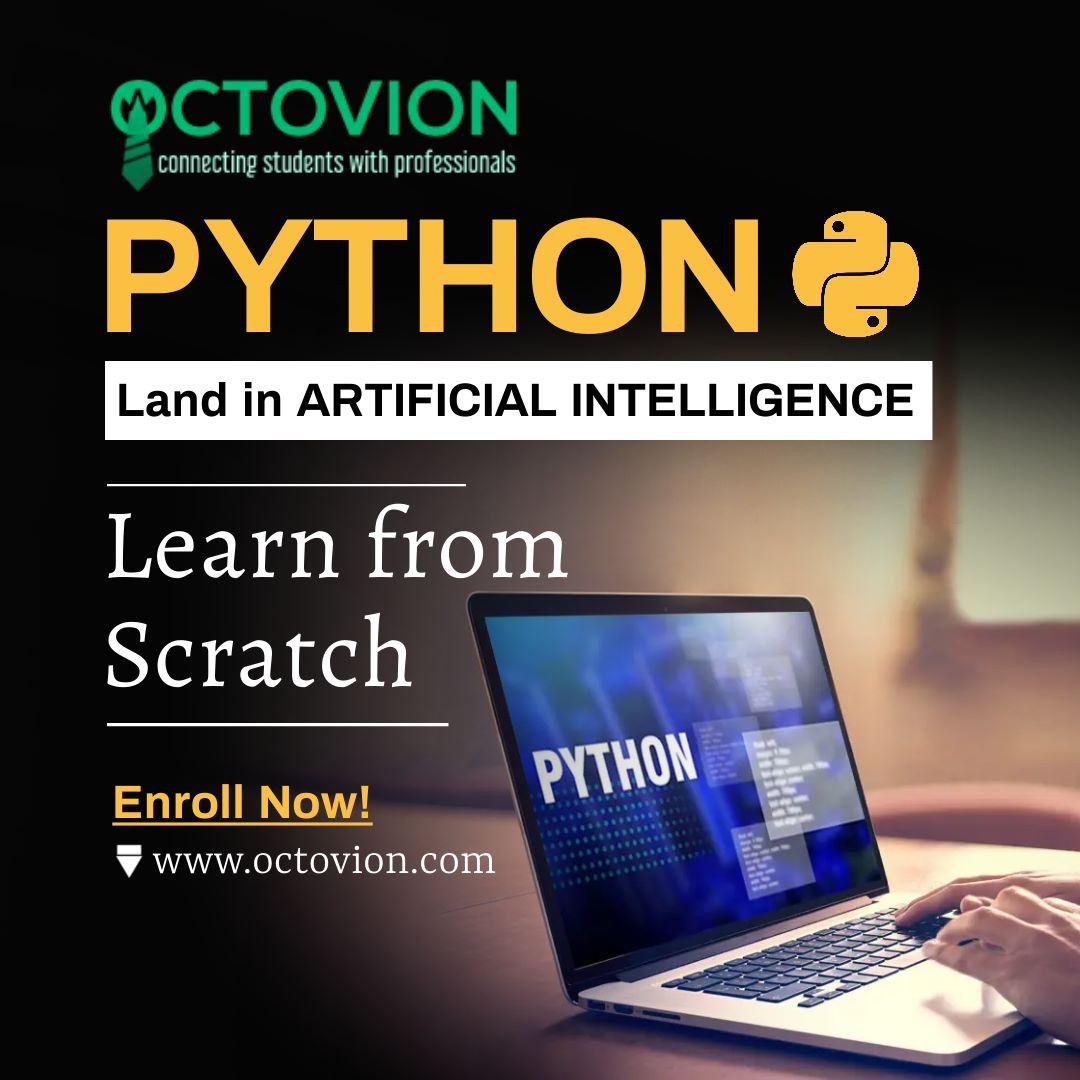Optimal Workforce Allocation: Unlocking Efficiency Through Data-Driven Decision Intelligence
In today’s fast-paced, hyper-competitive business landscape, companies are under immense pressure to do more with less. Resources are finite, and nowhere is this more evident than in managing human capital. Workforce allocation—the strategic assignment of employees to tasks, projects, or locations—can make or break a company’s operational efficiency and bottom line. But gone are the days when this process could rely on spreadsheets, intuition, or trial-and-error. Enter Optimal Workforce Allocation, a data-driven approach that leverages AI, machine learning, and decision intelligence to ensure every employee is placed where they can create the most value. At Diwo.ai, we’re revolutionizing how businesses make workforce decisions, helping them unlock productivity, agility, and resilience like never before.
Optimal workforce allocation isn’t just about filling open shifts or balancing workloads. It’s about strategically aligning the right talent, with the right s****s, at the right time and place—while simultaneously navigating constraints such as budgets, compliance, employee preferences, and market demands. For many organizations, especially those operating across multiple geographies or managing large-scale operations, this becomes a complex, dynamic puzzle. Traditional workforce planning tools fall short in addressing real-time shifts in business priorities, employee availability, and evolving customer expectations. That’s where intelligent allocation systems powered by decision intelligence come into play.
Decision intelligence, a concept central to Diwo.ai’s platform, transforms raw data into actionable insights by combining AI, machine learning, business rules, and human expertise. When applied to workforce allocation, it enables businesses to move from reactive staffing to proactive, optimized workforce strategies. The outcome? Enhanced operational efficiency, reduced labor costs, improved employee satisfaction, and superior customer experiences.
Imagine a retail chain preparing for a peak sales season. Historical data indicates increased foot traffic in urban locations, while new marketing campaigns are projected to drive more demand in suburban areas. Simultaneously, labor laws and contractual limitations restrict how and where employees can be scheduled. Using traditional tools, managers would struggle to manually juggle these variables. But with an optimal workforce allocation model powered by decision intelligence, the system can analyze thousands of scenarios in seconds, recommending the best staffing approach based on business goals and real-world constraints. Diwo.ai’s platform not only automates this process but provides clear, explainable recommendations that empower decision-makers to act with confidence.
Moreover, optimal workforce allocation isn’t a one-time event—it’s a continuous process. Businesses must adapt to shifting customer patterns, sudden employee absences, seasonal trends, and unforeseen disruptions like supply chain breakdowns or public health crises. By integrating real-time data feeds—from HR systems, CRM platforms, and external sources—Diwo.ai ensures workforce strategies remain agile and responsive. Our platform helps identify gaps, predict future needs, and simulate outcomes under different scenarios, ensuring organizations stay one step ahead.
One of the biggest challenges in workforce allocation is aligning business needs with employee expectations. Today’s workforce demands flexibility, autonomy, and purpose. Overburdening high-performers, ignoring personal preferences, or rigid scheduling leads to burnout and attrition. Optimal workforce allocation supported by AI enables fairer, more transparent decision-making. For example, Diwo.ai’s solution can incorporate employee feedback, s**** development goals, and scheduling preferences into the allocation engine—creating outcomes that support both business objectives and employee well-being.
The benefits of optimal workforce allocation are far-reaching. In industries like healthcare, it ensures critical staff are available where patient needs are greatest—improving care delivery while minimizing overtime costs. In manufacturing, it helps allocate specialized technicians to high-value production lines, reducing downtime and improving quality. In logistics, it ensures delivery routes are staffed based on real-time demand patterns. And in finance or tech, it aligns top talent to priority initiatives, speeding up innovation and time to market. Across sectors, smarter workforce allocation translates directly into competitive advantage.
https://www.diwo.ai/ai-use-cas....es/workforce-allocat



Customer Support Intelligence: Transforming Customer Service with AI
In today’s hyper-connected, digital-first world, customer support is no longer just a post-sale service—it’s a critical brand differentiator. As customer expectations rise, businesses face increasing pressure to deliver fast, accurate, and personalized support across channels. Enter Customer Support Intelligence (CSI)—a transformative approach that leverages artificial intelligence, machine learning, and data analytics to optimize customer service operations.
At diwo.ai, we’re at the forefront of this revolution, helping organizations harness CSI to unlock actionable insights, automate repetitive tasks, and elevate customer experiences. In this article, we’ll explore what Customer Support Intelligence is, why it matters, and how companies can use it to gain a competitive edge.
What is Customer Support Intelligence?
Customer Support Intelligence refers to the use of AI-driven tools and technologies to enhance every aspect of customer support. This includes real-time sentiment analysis, predictive issue resolution, intelligent routing, self-service automation, and performance analytics.
Rather than relying solely on human agents to interpret, manage, and respond to customer inquiries, CSI integrates natural language processing (NLP), machine learning (ML), and contextual analytics to augment and, in some cases, automate support processes.
In simple terms, CSI turns your support data into strategic insight—and action.
Why Traditional Support Models Fall Short
Traditional customer support models are reactive and siloed. Teams often juggle multiple tools, navigate incomplete data, and struggle to provide consistent service across channels. This leads to:
Slow response times
Inaccurate or inconsistent answers
High agent turnover
Poor customer satisfaction (CSAT) scores
Worse yet, traditional systems typically fail to capture and learn from customer interactions. This creates a missed opportunity to continuously improve service quality and operational efficiency.
The Benefits of Customer Support Intelligence
Implementing Customer Support Intelligence isn’t just a tech upgrade—it’s a strategic move that delivers tangible benefits across the organization:
1. Improved Response Time
With AI-powered chatbots and intelligent ticket triaging, customers receive faster responses. CSI systems can automatically route inquiries to the best-suited agent or suggest solutions before the customer even reaches out.
2. 24/7 Omnichannel Support
CSI solutions can operate round-the-clock across multiple channels—email, live chat, social media, voice—ensuring a seamless experience no matter where or when customers reach out.
3. Enhanced Agent Productivity
Intelligent tools assist agents with real-time recommendations, summarize customer history, and auto-fill responses, allowing them to focus on more complex issues and reduce handling time.
4. Actionable Insights
Through deep analytics and feedback loops, CSI uncovers trends in customer behavior, product issues, and service gaps, enabling continuous improvement and proactive support strategies.
5. Scalability and Cost Efficiency
CSI solutions scale effortlessly as your customer base grows. By automating repetitive tasks and deflecting simple queries to AI, you reduce support costs without compromising quality.
Real-World Applications of Customer Support Intelligence
Let’s look at how CSI plays out in real-world scenarios:
- AI-Powered Chatbots
Modern chatbots, powered by conversational AI, handle tier-1 queries with human-like accuracy. They deflect up to 80% of common inquiries—password resets, order statuses, FAQs—freeing up human agents for complex cases.
- Predictive Support
CSI uses historical data and machine learning to predict issues before they escalate. For example, if a user repeatedly encounters a login error, the system can flag it for proactive outreach or self-service guidance.
- Sentiment Analysis
Real-time sentiment detection helps agents tailor responses based on a customer’s emotional state, improving empathy and resolution outcomes.
- Dynamic Knowledge Bases
AI-curated knowledge bases evolve based on usage patterns. They surface the most relevant content dynamically, reducing search friction for both customers and agents.
https://www.diwo.ai/ai-use-cas....es/customer-support-
Retail Optimization: Enhancing Efficiency and Customer Experience with Data and AI
In today's fast-paced and ever-evolving retail landscape, companies are facing significant challenges. The need to adapt quickly to consumer behavior, streamline operations, and maximize profitability has never been greater. Retail optimization has emerged as a critical strategy that allows businesses to enhance their efficiency, reduce costs, and improve customer satisfaction by leveraging data and advanced technologies.
At Diwo.ai, we believe that retail optimization is not just about cutting-edge technology but also about understanding the nuances of customer behavior and making data-driven decisions that empower retailers to deliver seamless experiences. In this blog, we will explore what retail optimization is, the tools and techniques involved, and how your business can benefit from a more optimized retail strategy.
What is Retail Optimization?
Retail optimization refers to the process of enhancing various facets of a retail operation to improve overall performance. This includes optimizing inventory management, pricing strategies, supply chain logistics, marketing, and even customer experience. The primary goal of retail optimization is to maximize revenue while minimizing inefficiencies across all touchpoints, from the moment a product is stocked to when it is purchased by a customer.
Retail optimization leverages data analysis, artificial intelligence (AI), machine learning (ML), and other technological tools to provide retailers with the insights they need to make ****ter decisions. By improving these areas, companies can not only boost profitability but also build stronger relationships with customers and gain a competitive edge in the market.
Key Areas of Retail Optimization
1. Inventory Management
Efficient inventory management is crucial for retail success. Overstocking can lead to wasted resources, while understocking can result in missed sales and poor customer experiences. Retail optimization involves using data to predict demand trends, optimize stock levels, and manage product flows more effectively.
With AI-driven inventory management solutions, retailers can analyze sales data, customer behavior, and seasonal trends to determine the optimal inventory levels for each product. This minimizes the risk of stockouts and ensures that products are always available when customers need them, ultimately improving the overall shopping experience.
2. Dynamic Pricing
Retailers often face the challenge of setting prices that are competitive yet profitable. Dynamic pricing, powered by AI and machine learning, allows retailers to adjust prices in real-time based on factors such as demand, competitor pricing, inventory levels, and customer behavior.
AI algorithms can analyze vast amounts of data and recommend optimal pricing strategies to maximize sales and margins. By leveraging dynamic pricing, retailers can stay competitive in an ever-changing market and ensure that their products are priced in line with customer expectations and market conditions.
3. Supply Chain Optimization
Supply chain efficiency is critical for retail businesses to meet customer demand on time and reduce operational costs. Retail optimization techniques involve using advanced analytics and AI to predict demand, identify supply chain bottlenecks, and streamline logistics.
For instance, predictive analytics can forecast demand at specific locations, allowing retailers to optimize delivery schedules, reduce lead times, and minimize stockouts. AI-powered tools can also help with supplier selection, cost analysis, and route optimization, resulting in lower shipping costs and faster delivery times.
4. Personalized Marketing and Customer Experience
Retail optimization is also about enhancing the customer experience. Personalization has become a key differentiator for retailers who want to build brand loyalty and increase conversion rates. With the help of AI, retailers can offer tailored recommendations, discounts, and targeted advertisements based on a customer’s browsing behavior, purchase history, and demographic information.
AI algorithms can analyze customer data to predict preferences and recommend products that are more likely to convert, increasing both sales and customer satisfaction. Furthermore, personalized marketing campaigns can boost customer engagement by delivering the right message to the right person at the right time, creating a more seamless shopping experience.
https://diwo.ai/catalyst-v2/as....sortment-optimizatio
Excel In Enterprise Finance & Accounting With Comprehensive SAP FICO Certification Training
Are you looking to advance your expertise in SAP Financial Accounting and Controlling (FICO)? Our comprehensive SAP FICO certification training courses are designed to equip you with the s****s and knowledge necessary to excel in enterprise finance and accounting.
Why Choose SAP FICO Training at Octovion?
Expert Instructors: Learn from seasoned SAP FICO professionals who bring extensive real-world insights and practical knowledge to the classroom. They will guide you through hands-on exercises and share valuable tips and best practices in SAP FICO implementations.
Flexible Learning Options: We understand the importance of flexibility in your learning journey. Choose from many instructor-led online training options, allowing you to select the format that best suits your schedule and learning preferences. Attend live virtual classes or access recorded sessions at your convenience.
Comprehensive Curriculum: Our SAP FICO training programs cover the entire SAP FICO functionalities and processes. Whether you are just starting or seeking advanced s****s, we offer courses tailored to your proficiency level in SAP FICO.
Hands-on Labs: Put theory into practice with hands-on labs that immerse you in real-world SAP FICO scenarios. Gain practical experience and build confidence in utilizing SAP FICO tools and functionalities effectively within an enterprise environment.
Career Growth: SAP FICO s****s are highly sought after in various industries worldwide. By acquiring expertise in SAP FICO, you open doors to exciting career opportunities and can significantly enhance your earning potential in enterprise finance and accounting.
Explore Our SAP FICO Course Offerings at Octovion
SAP FICO Fundamentals: Perfect for beginners, this course provides a solid foundation in SAP FICO. Learn about core financial accounting principles, controlling processes, and how to navigate the SAP interface efficiently.
SAP FICO Consultant: Dive deeper into the role of a SAP FICO consultant, focusing on configuring and customizing SAP FICO modules to meet specific business requirements. Explore integration with other SAP modules and industry best practices.
SAP FICO End User: Tailored for end users, this course covers day-to-day operations within SAP FICO, including financial reporting, budgeting, and asset management. Gain practical s****s to streamline financial processes within your organization.
SAP FICO Integration: Master the art of integrating SAP FICO with other enterprise systems and third-party applications. Learn about data migration, system interfaces, and best practices for seamless integration across the organization.
SAP FICO Advanced Reporting: Unlock the power of SAP FICO data with advanced reporting and analytics techniques. Learn to create custom reports, dashboards, and financial models to drive informed decision-making within your organization.
Enroll in an SAP FICO certification training course today to become an SAP FICO expert. Gain the s****s you need to thrive in enterprise finance and accounting and new career opportunities in SAP at the lowest prices.
https://octovion.com/excel-in-....enterprise-finance-a
Enhance Your Pharmacovigilance S****s with Octovion's Expert Training"
Introduction
Pharmacovigilance is a critical aspect of the pharmaceutical industry, ensuring the safety and efficacy of medications. As a vital component of patient care, pharmacovigilance requires specialized training and expertise. At Octovion, we offer comprehensive pharmacovigilance training programs designed to equip professionals with the knowledge and s****s needed to excel in this field.
What is Pharmacovigilance?
Pharmacovigilance is the science and activities related to the detection, assessment, understanding, and prevention of adverse effects or any other possible ****-related problems. This includes monitoring, reporting, and analyzing adverse events, as well as implementing measures to minimize risks associated with medications.
Importance of Pharmacovigilance Training
Pharmacovigilance training is essential for professionals working in the pharmaceutical industry, regulatory affairs, and healthcare. It helps ensure that medications are safe and effective, and that patients receive the best possible care. Some key reasons why pharmacovigilance training is important include:
- Patient safety: Pharmacovigilance training helps professionals identify and mitigate risks associated with medications, ensuring patient safety.
- Regulatory compliance: Pharmacovigilance training is essential for complying with regulatory requirements and guidelines, such as those set by the FDA and EMA.
- Industry standards: Pharmacovigilance training helps professionals stay up-to-date with industry standards and best practices, ensuring that medications are safe and effective.
Octovion's Pharmacovigilance Training Programs
At Octovion, we offer comprehensive pharmacovigilance training programs designed to meet the needs of professionals working in the pharmaceutical industry, regulatory affairs, and healthcare. Our training programs cover a range of topics, including:
- Pharmacovigilance principles: Our training programs cover the fundamental principles of pharmacovigilance, including the detection, assessment, and prevention of adverse effects.
- Regulatory requirements: We provide training on regulatory requirements and guidelines, including those set by the FDA and EMA.
- Case studies and examples: Our training programs include case studies and examples to illustrate key concepts and principles.
Benefits of Octovion's Pharmacovigilance Training
Our pharmacovigilance training programs offer numerous benefits, including:
- Enhanced knowledge and s****s: Our training programs help professionals develop a deeper understanding of pharmacovigilance principles and practices.
- Improved patient safety: By identifying and mitigating risks associated with medications, our training programs help ensure patient safety.
- Regulatory compliance: Our training programs help professionals comply with regulatory requirements and guidelines.
Conclusion
Pharmacovigilance training is essential for professionals working in the pharmaceutical industry, regulatory affairs, and healthcare. At Octovion, we offer comprehensive pharmacovigilance training programs designed to equip professionals with the knowledge and s****s needed to excel in this field. Contact us today to learn more about our training programs.
https://octovion.com/****-safe....ty-and-pharmacovigil









